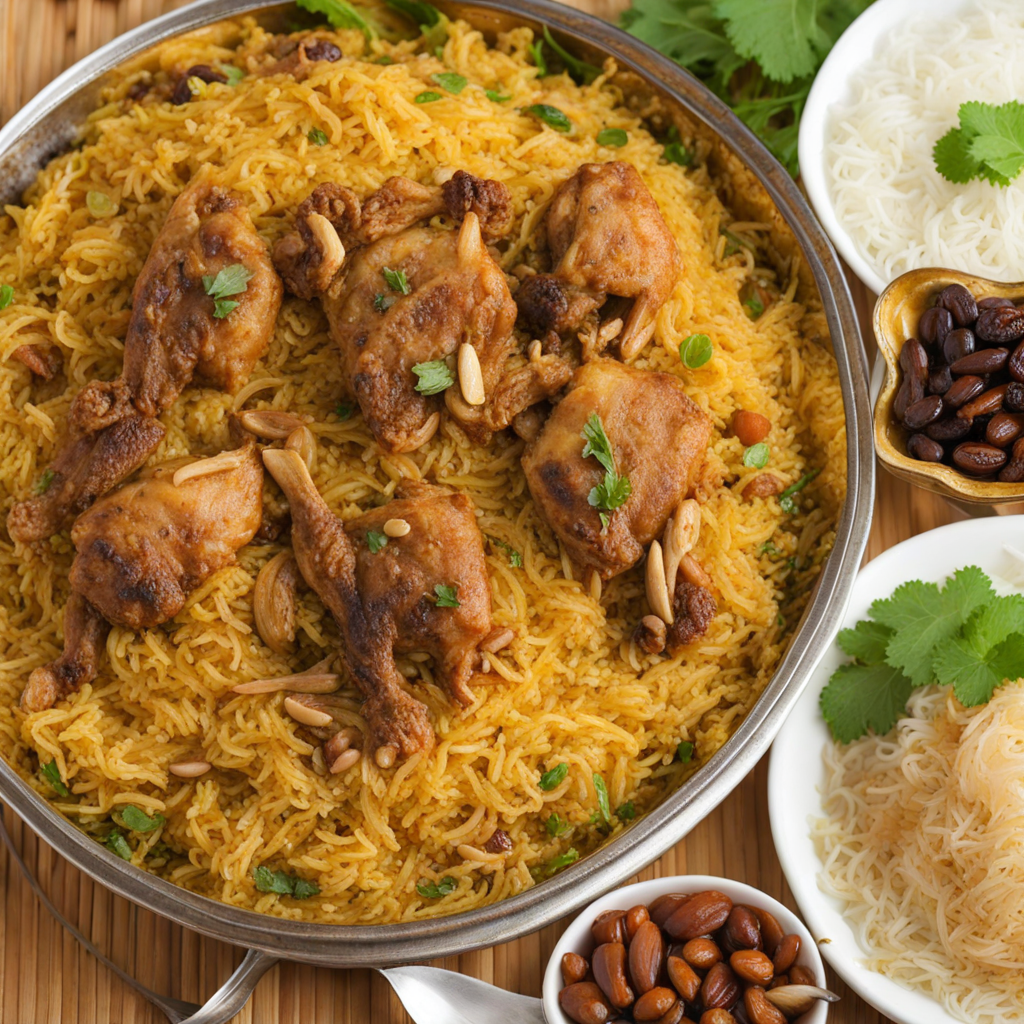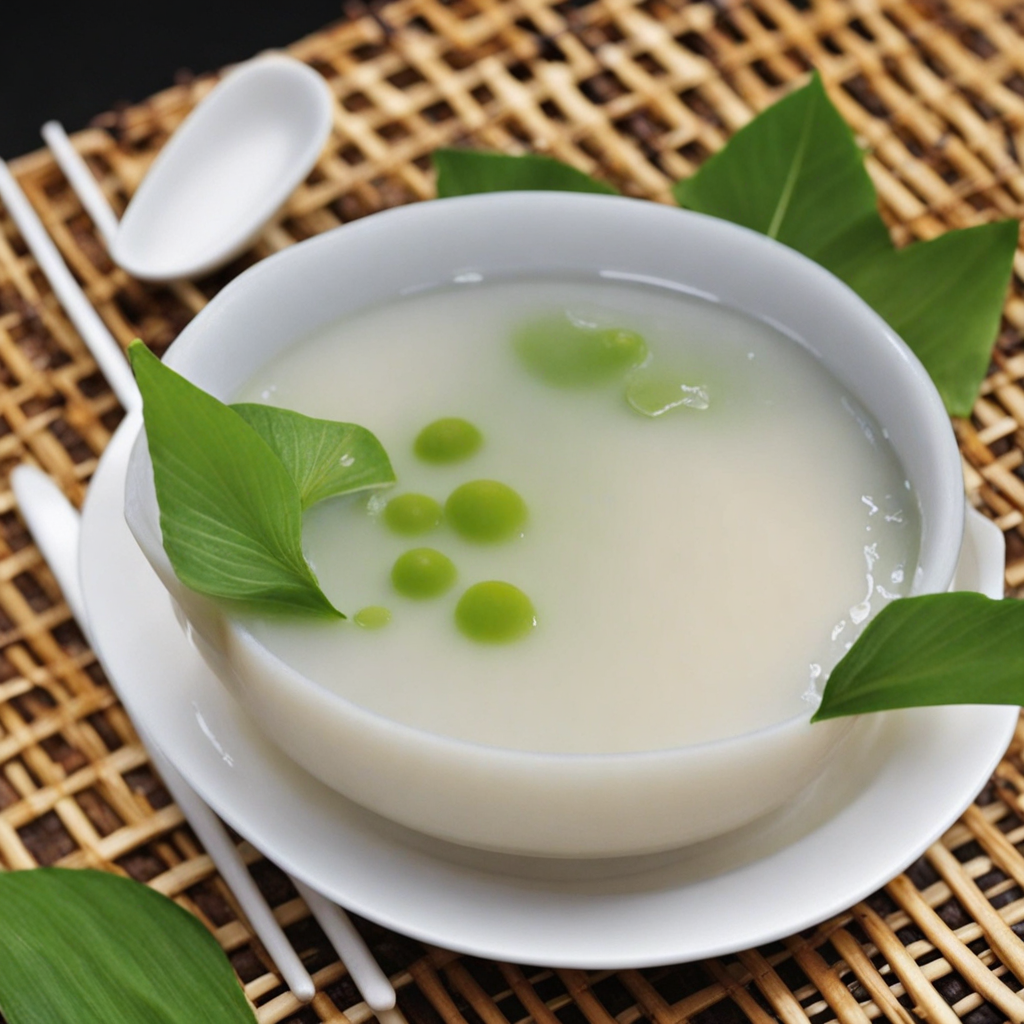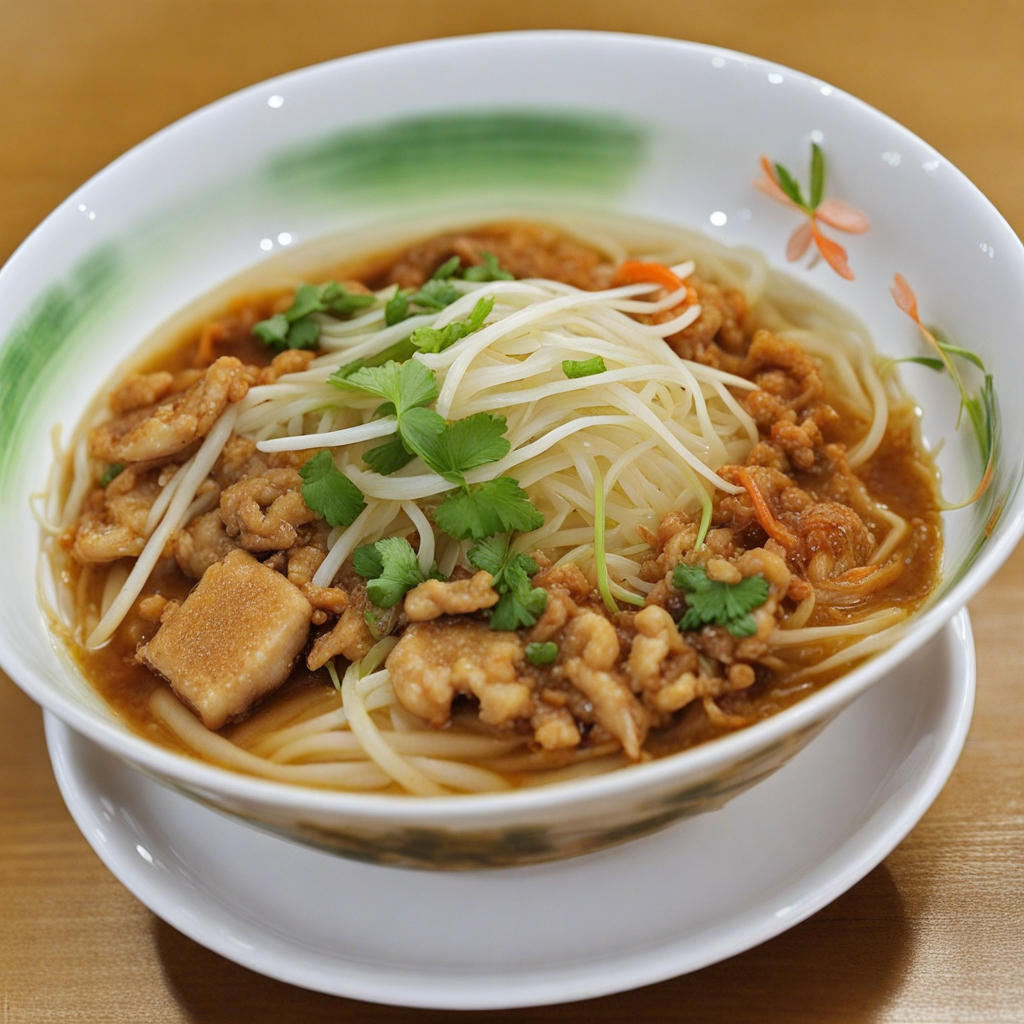Burmese Biryani
Dampauk Sar, a cherished traditional dish from Myanmar, exemplifies the country’s rich culinary heritage and diverse flavors. This dish, often referred to as "Dampauk salad," is made primarily from fermented fish, which is a staple in many Southeast Asian cuisines. The history of this dish reflects the deep-rooted fishing culture along the rivers and coasts of Myanmar, where local communities have relied on fish as a primary source of sustenance for generations. The preparation and consumption of Dampauk Sar illuminate the ingenuity of the Burmese people in preserving food and enhancing flavors through fermentation. The flavor profile of Dampauk Sar is vibrant and complex, characterized by its umami richness and a tangy undertone. The fermented fish, usually made from freshwater fish like catfish, provides a distinctive salty depth, which is balanced by the freshness of various herbs and vegetables. The dish often incorporates a blend of sour and spicy elements, achieved through the addition of lime juice, chili, and sometimes tamarind, creating a harmonious medley that tantalizes the taste buds. Each bite offers an explosion of flavors that reflects the balance between the earthiness of the fish and the brightness of the accompanying ingredients. Preparation of Dampauk Sar is a meticulous process that begins with the selection of fresh fish, which is then cleaned and fermented for several days to develop its unique flavor. The fermentation process is crucial, as it enhances the fish's natural taste while also preserving it. Once the fish is adequately fermented, it is fl
How It Became This Dish
The History of 'ဒံပေါက်ဆာ' (Dampauk Sar) from Myanmar #### Origins 'ဒံပေါက်ဆာ' (Dampauk Sar) is a traditional dish from Myanmar, often enjoyed during significant cultural festivities and family gatherings. Its name translates to "fermented rice," which is a nod to the primary ingredient that forms the backbone of this dish. The dish has its roots in the agricultural practices of the Myanmar people, especially those from rural areas where rice is a staple crop. The origins of Dampauk Sar can be traced back to the early agricultural societies in the region, which relied heavily on rice cultivation. As rice became a dietary staple, various methods of preparation emerged, including fermentation, a technique that not only preserved the rice but also enhanced its flavor and nutritional profile. The fermentation process, which can be traced back to ancient practices across many cultures, involved allowing cooked rice to sit and develop natural yeasts, resulting in a tangy, slightly sour flavor. #### Cultural Significance Dampauk Sar holds a special place in the cultural tapestry of Myanmar. It is often associated with communal eating, symbolizing togetherness and the sharing of resources. In many Myanmar households, the preparation of Dampauk Sar is not just about food; it is a ritual that brings family members together. The process of soaking, cooking, and fermenting rice, followed by the mixing of various ingredients, creates an atmosphere of collaboration and shared tradition. The dish is particularly prominent during festive occasions such as Thingyan (the Water Festival) and Thadingyut (the Festival of Lights). During these celebrations, Dampauk Sar is often served alongside other traditional dishes, showcasing the diversity and richness of Myanmar’s culinary heritage. It embodies the essence of Myanmar's agricultural lifestyle, where food is not just sustenance but a means of connection and celebration. #### Development Over Time Over the centuries, Dampauk Sar has evolved, influenced by the changing agricultural practices, regional flavors, and the introduction of new ingredients. The basic recipe remains relatively unchanged: fermented rice mixed with a variety of accompaniments such as vegetables, herbs, and sometimes meat or fish. However, as urbanization has increased and global culinary trends have penetrated the local food scene, variations of Dampauk Sar have emerged. In rural areas, the traditional methods of making Dampauk Sar are still preserved, with families often passing down their unique recipes through generations. Each family may add their twist, incorporating locally available ingredients or adapting to the preferences of younger generations. In contrast, urban areas have seen a rise in modern interpretations of the dish, where chefs experiment with flavors and presentation, making it appealing to the younger populace and tourists. One notable transformation has been the incorporation of spices and flavors influenced by neighboring countries. For instance, the use of chili, which is prevalent in many Southeast Asian cuisines, has found its way into some versions of Dampauk Sar, giving it a spicy kick that appeals to contemporary palates. The dish’s versatility has allowed it to blend seamlessly with other culinary traditions while still maintaining its authentic roots. In recent years, there has been a growing interest in traditional foods and their significance to cultural identity. As Myanmar's global presence has increased, so too has the curiosity surrounding its culinary heritage. Dampauk Sar has begun to gain recognition beyond Myanmar's borders, with food enthusiasts and chefs showcasing the dish in culinary festivals and international food fairs. This has opened up discussions around the importance of preserving traditional dishes while also embracing innovation. #### Nutritional Aspects From a nutritional standpoint, Dampauk Sar is a powerhouse. The fermentation process not only enhances the flavor but also increases the bioavailability of nutrients, making it easier for the body to absorb vitamins and minerals. Fermented foods are known for their health benefits, particularly in promoting gut health, which is becoming increasingly significant in today's health-conscious society. The dish is often accompanied by a variety of vegetables, which adds fiber and essential nutrients, making it a balanced meal. The addition of proteins, whether from fish, meat, or legumes, further enhances its nutritional profile, making Dampauk Sar a wholesome option for families. #### Conclusion Dampauk Sar is more than just a dish; it is a representation of Myanmar's agricultural heritage, cultural significance, and communal values. Its evolution over time reflects the changing dynamics of society, from traditional rural practices to modern urban interpretations. As it continues to adapt to contemporary tastes while remaining rooted in its history, Dampauk Sar serves as a delicious reminder of the importance of food in cultural identity and community bonding. In a world that is becoming increasingly globalized, the preservation and celebration of traditional dishes like Dampauk Sar are vital. They not only provide a taste of the past but also foster a sense of pride in one’s heritage. As the younger generations discover and appreciate their culinary roots, Dampauk Sar will undoubtedly continue to thrive, bringing people together over shared meals and cherished traditions for years to come.
You may like
Discover local flavors from Myanmar







